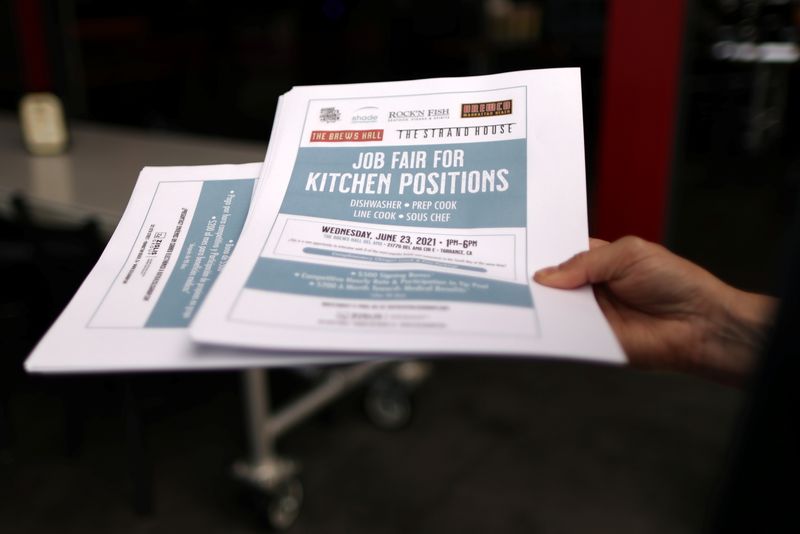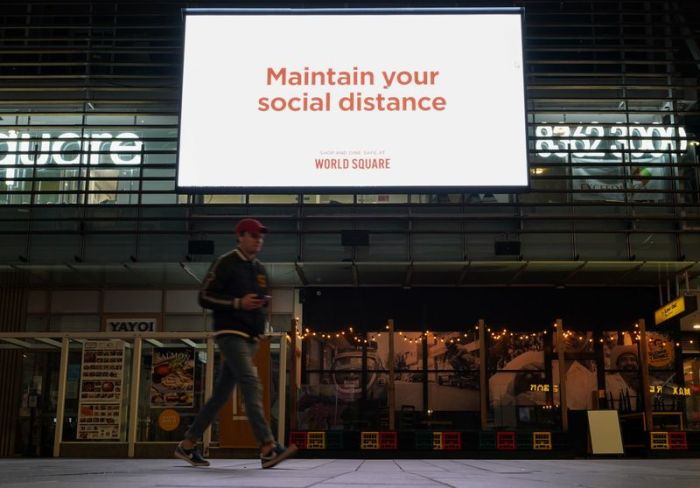WASHINGTON (Reuters) – U.S. job openings rose slightly to a new record high in May and hiring dipped, a sign that the economy could still be struggling with labor shortages as coronavirus restrictions eased across the country.
Job openings, a measure of labor demand, rose by 16,000 to 9.2 million on the last day of May, the Labor Department said in its monthly Job Openings and Labor Turnover Survey, or JOLTS report, on Wednesday.
Hiring also dipped to 5.9 million in May from 6.0 million in the prior month. The government reported last Friday that job growth accelerated in June as U.S. companies hired the most workers in 10 months.
“The latest survey data suggest that labor shortages remain acute,” said Andrew Hunter, an economist at Capital Economics.
Graphic: JOLTS – https://graphics.reuters.com/USA-STOCKS/xlbpgqmlkpq/JOLTS.png
The number of people re-entering the workforce has lagged job openings as the economy recovers from the COVID-19 pandemic. More than 9 million people remain officially unemployed. A lack of affordable childcare in particular has been blamed for keeping workers, mostly women, on the sidelines while others have stayed home due to lingering fears about the virus.
Economists polled by Reuters had forecast job openings would rise to 9.39 million in May. Vacancies were little changed in all four regions and the job openings rate was unchanged at 6.0%.
Graphic: Job openings are at a record high – https://graphics.reuters.com/USA-ECONOMY/azgvoqyjdvd/chart_eikon.jpg
Unfilled vacancies increased by 109,000 in other services and there were an additional 46,000 job openings in state and local government education. Vacancies declined in state and local government and the federal government.
The report also showed the number of people voluntarily leaving their employment in May fell to 3.6 million from 4.0 million in April, although quits levels still rose in the leisure and hospitality, and accommodation and food services sectors. The quits rate is usually seen as a barometer of job market confidence.
People quitting their jobs now accounts for more than two-thirds of all job separations and remains well above pre-pandemic levels.
Graphic: Take this job and … – https://graphics.reuters.com/USA-ECONOMY/yxmpjzqjrpr/chart_eikon.jpg
Economists generally expect the labor crunch to ease in the fall as schools reopen and government-funded unemployment benefits cease while cautioning the labor supply may continue to be lower due to pandemic-related retirements.
(Reporting by Lindsay Dunsmuir; Editing by Andrea Ricci)





















